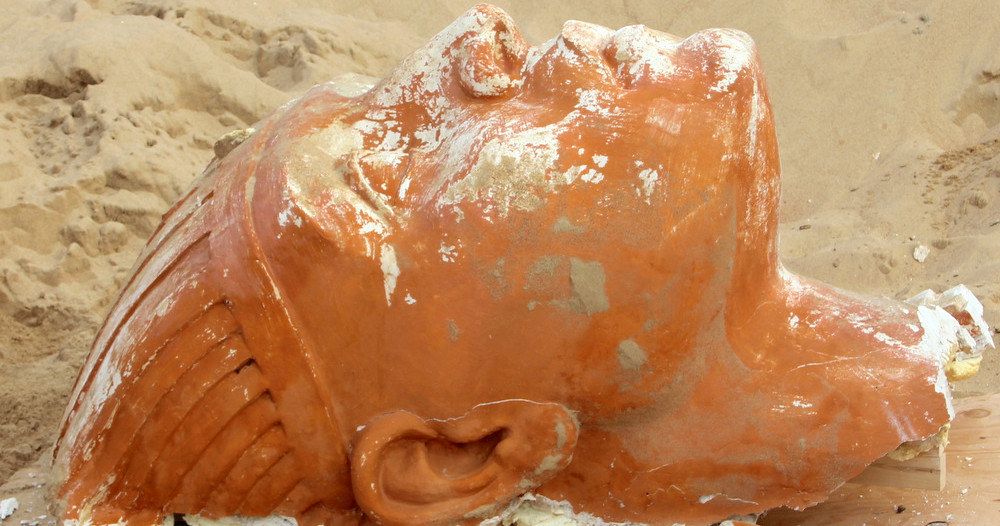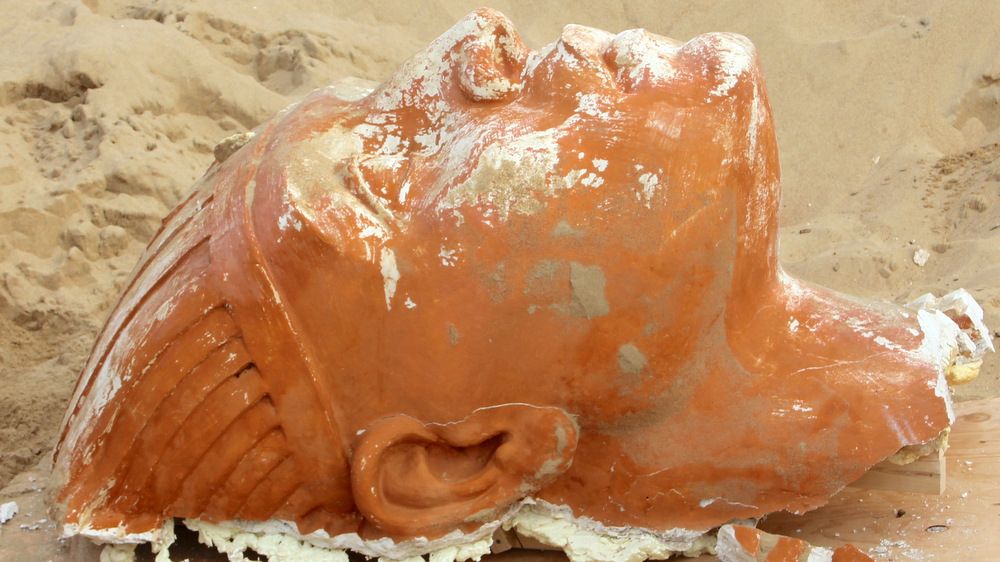While not technically ancient, archaeologists working in sand dunes on the central California coast have dug up an intact plaster sphinx that was part of an Egyptian movie set built more than 90 years ago for Cecil B. DeMille's epic The Ten Commandments. Sphinxes are creatures from Egyptian myth and legend with a human head and the body of a lion and were a large part of the set of DeMille's legendary silent movie. The director ordered the construction of a huge Egyptian set including pharaohs, sphinxes, and temples for the 1923 epic. Some say that the massive set pieces were buried because it would have been too expensive to transfer them after the completion of the movie.
This is the second 300-pound sphinx head that archeologists have been able to dig up from the site. The latest discovery is just the start for excavators, who have only unearthed a small piece of the colossal set for The Ten Commandments. Director Peter Bronson set out with a group of young filmmakers to find the not-so-ancient ruins in the early 1980s, with excavations now beginning nearly 40 years later and with twenty-one sphinxes built for the movie, there's still plenty more for treasure hunters to find.
Executive Director of the Dunes Center, Doug Jenzen, explains that the latest sphinx head is unlike anything from the set of Cecil B. DeMille's Ten Commandments that has been found thus far. Apparently, the sand kept most of the original paint intact and it's giving movie buffs a better understanding about how Hollywood movies were made nearly 100 years ago. Though the movie was shot in black and white, DeMille still had the massive set pieces painted with intense colors. Jenzen had this to say.
"The majority of it is preserved by sand with the original paint still intact. This is significant and shows that we're still learning unexpected facets to film historical movie production such as the fact that objects in black and white films were actually painted extremely intense colors."
The set for The Ten Commandments was as big as 12 stories high and 800 feet wide, with only a small part being uncovered so far. It took 1,500 men to build the city back in the early 1920s, using more than 25,000 pounds of nails to put it all together. According to local legend, Cecil B. DeMille had the set buried because it was too valuable and too expensive, while others claim that it was just too expensive to transport. In an obvious response, some have gone on to hypothesize that the real-life sphinx and pharaohs in Egypt are actually just movie set pieces as well, probably built on the same set as the moon landings.
The Ten Commandments has been praised for its "immense and stupendous" set and was known for stellar special effects at the time, including the scene where the Red Sea is parted. Cecil B. DeMille re-made the movie in 1956 and it was, once again, one of the most expansive sets ever built up to that point. There are still many more pieces to be found on the central California coast, so expect to see some more of Hollywood history popping up in the news. You can read more about the 300-pound sphinx head from The Ten Commandments via Variety.


